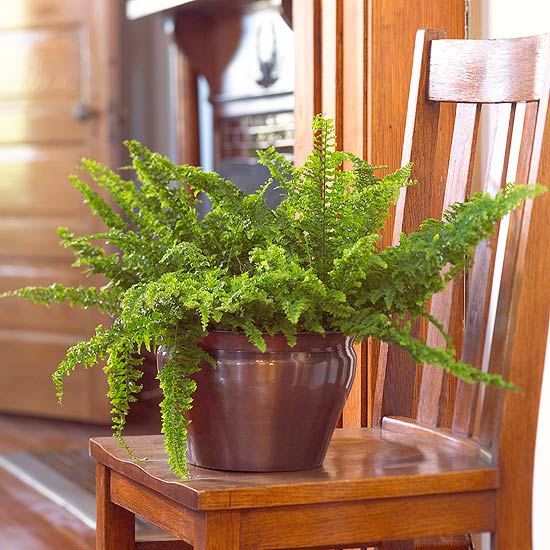






Keep indoor ferns looking their best by accommodating their needs for the right light, moisture and humidity, and occasional feeding.
Ferns prefer indirect light, which means ferns should reside in the interior of a room and not be placed directly in a window. The indirect light from a north window is perfect. If ferns receive too much sun, their leaves can become burned looking and dry out faster. Ferns do best when indoor daytime temperatures range from 65 to 75 degrees F., and are a bit cooler at night. Most ferns hail from the tropics and don't like very cool temperatures, so keep ferns out of cold drafts in the winter.
Most ferns like evenly moist soil. Water regularly to keep the soil moist but not wet. Overwatering your fern will result in yellow or wilted leaves; too much water may cause the roots to rot. To gauge soil moisture, stick your finger into the soil. If it is dry, give your fern a drink. If it is still wet, wait a few days before watering. All ferns like high humidity so keep plants on a tray with pebbles and water to keep moisture levels around the leaves as high as possible.
Ferns enjoy a fertilizer snack to keep their green good looks. Use a liquid houseplant fertilizer once a month in the late spring through autumn. Withhold fertilizer in the winter months.
Depending on their growth, ferns may need to be divided and repotted every couple years. The best time to divide ferns is in spring; remove the plant from the pot and divide the roots. Replant into several containers.
Ferns produce spores, which appear as brown spots on the back side of the leaves. If you'd like to propagate ferns, remove the leaves and place them in a paper sack to dry. When the spores fall off the leaves, plant them in seed-starting mix. Baby ferns will sprout from the spores.
Here's a list of the easiest indoor ferns you can grow.
Copyright © www.100flowers.win Botanic Garden All Rights Reserved